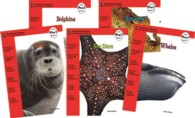- ホーム
- > 洋書
- > 英文書
- > Science / Mathematics
Full Description
The art of using chemical agents for medication dates back into antiquity, although most of the earliest examples used plants, herbs, and other natural materials. The old Egyptian medical papyri, which date from before 1400 B. C. , contain dozens of examples of such medicinal plants and animal extracts. In the Old Testament of the Bible, we can find references to using oil to soften the skin and sores (Isaiah 1:6), the use of tree leaves for medicine (Ezekiel 47:12) and various medical balms (Jeremiah 8:22). Not all these recipes were effective in curing the ailments for which they were used and sometimes the treatment was worse than the disease. Nevertheless, the art of using chemical derived agents for medicines continued to develop and received great impetus during the present century with the rise of synthetic organic chemistry. One of the most vexing problems has always been to achieve specifici ty with the medications. While some medical agents do indeed possess a relatively high degree of specificity, most agents are far more systemic than would be desired. Much of the research efforts to correct this deficiency has centered on modifying the chemical agents themselves. Unfortunately, there are severe limitations in this approach since minor modifications often drastically affect the therapeutic activity and can even render the drug completely ineffective, or worse.
Contents
Methodologies in Polymeric Medication.- Tissue/Material Interactions of Biomedical Polymers.- Polymer-Controlled Drug Delivery Systems: Science and Engineering.- Fibrous Delivery Systems for Antimicrobial Agents.- Evaluation of Membrane Suitability in Transdermal Drug Delivery.- Diffusion Controlled Release of Drugs from Coated Drug Polymer Complex.- Kinetics of Drug Release from Glassy Polymers: Effect of Initially Nonuniform Drug Distribution.- The Role of Polymer Matrix Structure and Interparticle Interaction in Diffusion-Limited Drug Release.- Polymeric Anticancer Agents - An Overview.- The Controlled Release of 5-Fluorouracil from Acrylate Copolymers of 1-(N-2-Ethylmethacrylcarbamoyl)-5-Fluorouracil Monomer.- Halogenated Nucleic Acids: Biochemical and Biological Properties of Fluorinated Polynucleotides.- Toxicity and Tissue Distribution of MVE-2 in the Dog After Intravenous and Intraperitonal Administration.- Transformation of Mouse Fibroblast (T3T) Cells Employing the Oncogenic Simian Virus 40 (SV40) for Evaluation of Anticancer Compounds.- Screening of Platinum II Polymines as Antitumor Drugs Employing Cell Differation of Normal and Transformed 3T3 Cells.- Polymeric Derivatives of cis-Dichlorodiammineplatinum II Analogs Based on Polyvinylamine-co-vinylsulfonate as Model Carriers In the Drug Delivery Systems.- Soluble Excipients Assisting Dissolution of Drugs: Importance of Amorphous State.- Polymeric Hydroxamic Acids for Iron Chelators Therapy.- Oxygen Species Chemistry of Osmium Carbohydrate Polymers.- Synthetic Polymeric Inducers of Interferon.- Polypeptides as Drugs.- A Systematic Approach to Induce New Catalytic Activities in Proteins.- Branched Polypeptides with a Poly(L-Lysine) Backbone: Synthesis, Conformation, and Immunomodulation.- Contributors.








